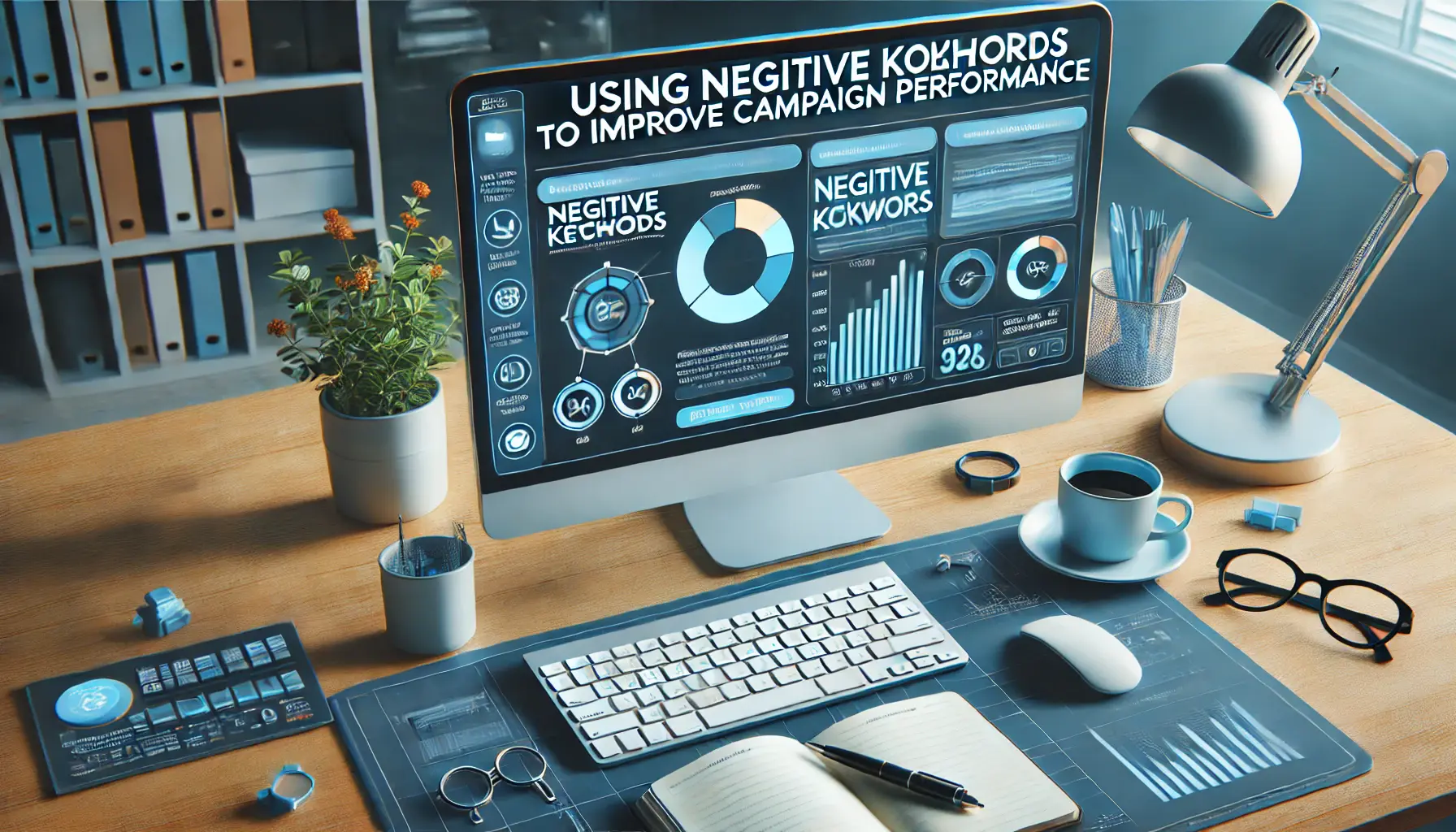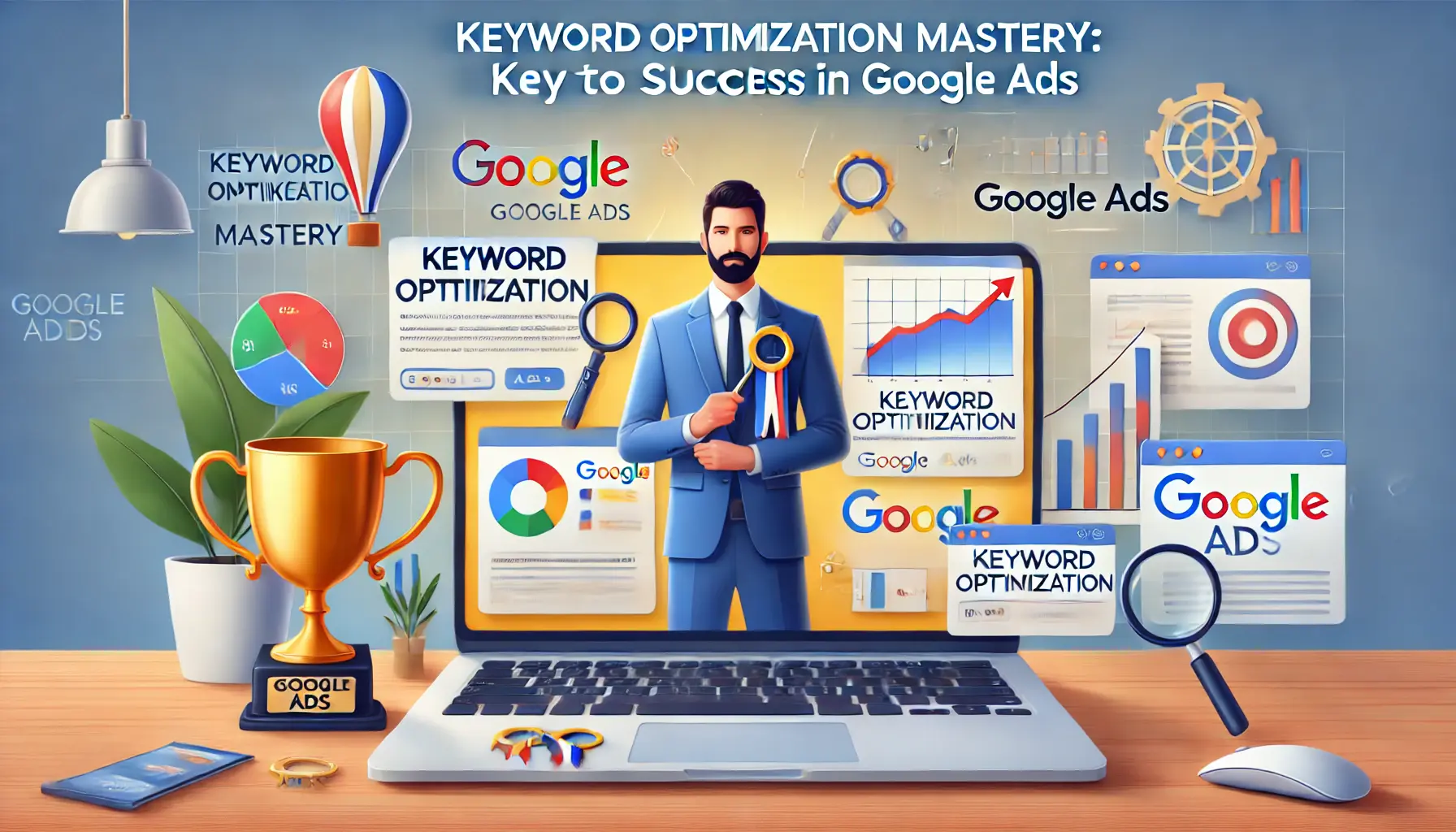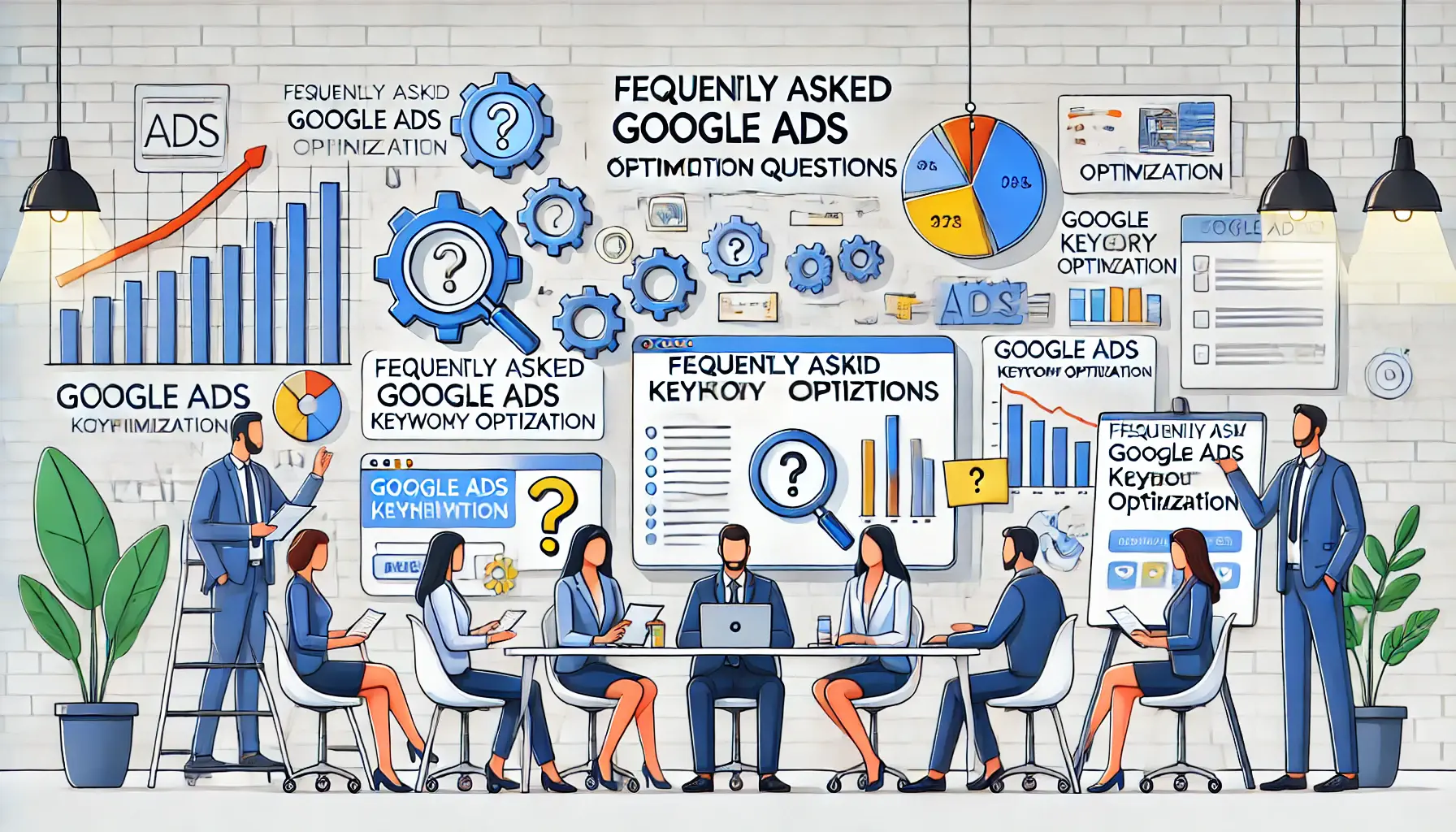Keyword optimization is one of the most important areas to master in digital marketing, especially when working with Google Ads.
Learning how to optimize keywords will elevate both experienced marketers and those just starting to the next level.
Keywords form the foundation of any advertising strategy—the missing link between what people are searching for and the solutions your business offers.
But how do you know if you’re choosing the right keywords and using them effectively?
In this article, you’ll learn essential keyword optimization tips to help improve your Google Ads campaign performance and achieve better results.
- The Importance of Keyword Optimization in Google Ads
- How to Research and Choose the Right Keywords for Your Campaign
- How to Optimize Keywords on Google Ads
- Advanced Optimization Techniques in Google Ads
- Measuring the Success of Your Keyword Optimization Strategy
- Keyword Optimization Mastery: Key to Success in Google Ads
- Frequently Asked Google Ads Keyword Optimization Questions
The Importance of Keyword Optimization in Google Ads
Keyword optimization in Google Ads is about more than just choosing popular words or sets of words.
It’s about selecting the most relevant terms for your target audience so that your ads appear at the perfect time.
With millions of searches happening on Google every second, there needs to be a solid strategy in place for your ads to stand out.
Effective keyword optimization impacts critical metrics such as click-through rate (CTR), conversion rates, and return on ad spend (ROAS).
Poorly aligned keywords can result in irrelevant clicks, wasting your budget on users who will not convert.
Therefore, selecting appropriate keywords and refining them over time is crucial to the success of any Google Ads campaign.

Visual representation of keyword optimization strategies.
What is Keyword Optimization?
Keyword optimization is the process of researching, analyzing, and selecting the best keywords to target in your Google Ads campaign.
It involves understanding what your audience is searching for and ensuring that your ads align with those search queries.
By optimizing your keywords, you increase the likelihood of showing your ads to people actively looking for your products or services.

Visual representation of the impact of keyword optimization on ad performance metrics.
Why Keyword Optimization Matters for Ad Performance
Effective keyword optimization directly impacts your ad’s visibility and performance.
When your keywords are well-optimized, your ad relevance increases, which can improve your Quality ScoreA metric used by Google Ads to determine the relevance and quality of your ads, keywords, and landing pages..
A higher Quality Score means your ads are more likely to rank higher at a lower cost.
Optimized keywords also improve targeting, ensuring your ads reach users with the highest intent to engage or convert.
- Improved ad relevance leads to a higher CTR.
- Better-targeted keywords help lower your cost-per-click (CPC).
- Higher Quality Scores can reduce your overall advertising costs while amplifying ad performance.
Keyword optimization is an ongoing process.
The more data you gather from your campaigns, the more fine-tuning and adjustments you can make to develop an optimal keyword strategy that yields the best results from your ad spend.
Keyword optimization ensures that your ads are reaching the right audience at the right time, which can drastically improve metrics such as click-through rate and return on ad spend (ROAS).

Visual representation of the keyword research process in digital marketing.
How to Research and Choose the Right Keywords for Your Campaign
The biggest step in keyword optimization with Google Ads is deciding on the right keywords.
This is one area where much research is necessary because poor selection might waste your ad spend and could target the wrong audience.
You should invest time in keyword research to find relevant terms that are competitive and align with your business goals if you want the best results from your campaigns.
Some crucial steps involved in researching and selecting keywords include:

Visual representation of using Google Keyword Planner for keyword research.
Using Google Keyword Planner for Keyword Research
Google Keyword Planner is a free tool used to find new keyword ideas and analyze the performance of existing keywords.
It displays the frequency of certain keywords being searched and lets you understand the level of competition, along with the cost-per-click (CPC) for every keyword.
This is a must-have for every Google Ads campaign to identify high-potential keywords to use in your strategy.
Here are some ways you can apply Google Keyword PlannerA free tool provided by Google that helps advertisers research and analyze keywords for their ad campaigns. for keyword research:
- Discover keyword ideas based on search volume and competition level.
- View keyword trends and seasonal search patterns to map out your campaigns effectively.
- Use historical data to forecast future search behavior for better optimization.

Visual representation of analyzing competitor keywords in digital marketing.
Analyzing Competitor Keywords
By analyzing the keywords your competitors target, you can identify gaps in your strategy and find keywords that haven’t been targeted yet.
Tools like SEMrush or Ahrefs can help you understand which keywords competitors use and what their ad campaigns focus on.
- Identify keywords where competitors are ranking in top positions.
- Find keyword opportunities that competitors are underutilizing or missing entirely.
- Diversify your campaigns by targeting unique long-tail keywords that competitors may not be using.

Visual representation of balancing broad, exact, and phrase match types in digital marketing.
Balancing Broad, Exact, and Phrase Match Types
There are three keyword match types in Google Ads: broad match, exact match, and phrase match.
Each type offers different levels of targeting, and balancing these types helps control when and how your ads appear in search results.
- Broad Match Keywords: Provide the most exposure but may attract irrelevant clicks.
- Exact Match Keywords: Offer the most precise targeting but generate fewer impressions.
- Phrase Match: Provide a balance of flexibility and relevance, making them a middle ground between broad and exact match types.
Using these match types appropriately will help you optimize your ads to reach the right audience with the right intent, ultimately improving your campaign performance.
Without proper keyword research, you risk wasting your ad spend on irrelevant traffic. Invest time to find competitive and aligned keywords for the best results.

Visual representation of the keyword optimization process in Google Ads.
How to Optimize Keywords on Google Ads
Once you settle on which keywords to use, the next step in keyword optimization involves employing best practices to ensure that your ads perform at their best.
Keyword optimization in Google Ads is an ongoing process, where you are constantly adjusting and checking ad relevance against cost.
Following established best practices can help you refine your strategy, improve ad quality, and maximize the return on investment (ROI) for your campaign.

Visual representation of using negative keywords to enhance campaign performance.
Using Negative Keywords to Improve Campaign Performance
Negative keywords play a crucial role in keyword optimization by preventing your ads from being triggered by irrelevant searches.
Including negative keywords in your campaigns helps filter out unnecessary traffic and directs your ad budget toward users more likely to convert.
This helps increase click-through rate (CTR), reduce cost-per-click (CPC), and improve return on ad spend (ROAS).
- Identify irrelevant terms that may trigger your ads but aren’t related to your offerings.
- Use the Google Ads search query report to find irrelevant terms to add to your negative keyword list.
- Continuously update your negative keyword lists to ensure you exclude unwanted traffic.

Visual representation of the relationship between keyword grouping and ad relevance.
Keyword Grouping and Ad Relevance
Ad relevance is a strong signal of how well your ad will perform in the auction and how much you’ll pay per click.
Logically grouping keywords makes it much easier to write highly targeted ads that resonate with specific audience segments.
The process for effective segmentation includes:
- Creating tightly themed ad groups with similar keywords.
- Writing ad copy that aligns with the intent behind each group of keywords.
- Monitoring the performance of ad groups and making adjustments as needed.
Adjusting Bids Based on Keyword Performance
Not all keywords will return equal performance, so adjusting your bids based on performance is key to optimizing your ad budget.
You can increase bids on high-performing keywords and lower bids on those underperforming.
Some strategies include:
- Using automated bidding strategies such as Target CPA or Maximize Conversions for hands-free bid adjustments.
- Manually adjusting bids for top-performing keywords to increase visibility and drive conversions.
- Lowering bids on underperforming keywords to free up budget for better-performing terms.

Visual representation of monitoring and tweaking keywords to improve click-through rates.
Monitoring and Tweaking Keywords for Better CTR
Monitoring your keywords and tweaking their performance is one of the most critical aspects of keyword optimization.
By reviewing your search terms report and analyzing data, you can identify which keywords are driving results and which need revision.
Continuous optimization ensures your ads remain relevant, cost-effective, and targeted to the right audience.
- Use the search terms report to identify high-performing keywords and refine your strategy.
- Test different match types and keyword variations to see what produces better results.
- Regularly update your keyword list by removing low-performing terms and adding new opportunities.
Follow these best practices to fine-tune your keyword optimization strategy and improve the performance of your Google Ads campaigns.
Optimization is a continual process—monitor keyword performance and make adjustments as needed to ensure cost-effective targeting and relevance.

Visual representation of advanced optimization techniques in Google Ads.
Advanced Optimization Techniques in Google Ads
The more you work with keyword optimization, the more advanced techniques you’ll want to apply to take your campaigns to the next level.
These techniques can help target your audience more effectively and improve your ad relevance, resulting in better business outcomes.
By incorporating advanced strategies into your keyword optimization efforts, you can gain a competitive edge and maximize the effectiveness of your campaigns.

Visual representation of Dynamic Keyword Insertion for personalized advertising.
Dynamic Keyword Insertion (DKI) for Tailored Ads
Dynamic Keyword Insertion (DKI) is a powerful feature in Google Ads that automatically updates your ad copy to include the keyword a user has searched for.
This helps make your ads more relevant to searchers, increasing the click-through rate (CTR) and overall ad performance.
DKI ensures that your ads are customized, making them more likely to capture users’ attention.
- Use DKI to automatically insert relevant search terms into your ad copy for improved relevance.
- Ensure the default ad text makes sense in case the dynamic keyword can’t be inserted.
- Test different DKI strategies to find what works best for your campaign’s success.

Visual representation of long-tail keywords and their advantages in digital marketing.
Long-Tail Keywords and Their Benefits
While long-tail keywords may not drive as much traffic compared to broader terms, they often lead to better conversions by targeting users further along in the decision-making process.
Long-tail keywords attract more qualified traffic to your Google Ads campaign.
- Target long-tail keywords to capture users with high intent who are most likely to convert.
- Long-tail phrases generally have less competition, resulting in lower cost-per-click (CPC).
- Use long-tail keywords to complement your broader keyword strategy for better overall campaign performance.

Visual representation of optimizing keywords for mobile search.
Optimizing Keywords for Mobile Search
Searches on mobile devices differ from desktop searches, as mobile users typically want quick, location-based results.
Pay extra attention to mobile-specific keywords and adjust your ad strategy to better reach mobile users.
- Incorporate mobile-specific keywords that fit how users search on their devices.
- Optimize your ad copy for the short, concise queries typical of mobile searches.
- Use location-based keywords to target users searching for services or products nearby.

Visual representation of leveraging seasonal and trending keywords in digital marketing.
Leveraging Seasonal and Trending Keywords
By staying on top of seasonal trends and tweaking your keyword strategy accordingly, you can capture more relevant traffic and conversions.
- Identify seasonal keywords relevant to your industry and plan campaigns around key dates.
- Monitor trends using tools like Google Trends to prepare for emerging keyword opportunities.
- Adjust your keyword bids and strategy to capitalize on high-traffic periods for seasonal terms.
Applying these advanced keyword optimization techniques will help improve your Google Ads campaigns and enhance results.
Continuously experimenting with these strategies will give you an edge over competitors and further optimize your ads.
Advanced techniques such as Dynamic Keyword Insertion and targeting long-tail keywords can help refine your ads for better relevance and performance.

Visual representation of measuring the success of a keyword optimization strategy.
Measuring the Success of Your Keyword Optimization Strategy
Once keyword optimization strategies have been implemented into your Google Ads campaigns, success needs to be measured.
It is essential that campaigns are regularly monitored and analyzed to ensure they are performing as expected, with adjustments made when necessary to improve results.
This approach helps you perfect your keyword optimization technique and ensures continued success.
Visual representation of tracking keyword performance with Google Analytics.
Tracking Keyword Performance with Google Analytics
Google Analytics is a valuable tool for tracking the performance of your keywords and gaining insights into user behavior.
By linking your Google Ads and Google Analytics accounts, you can gain in-depth foresight into how users behave after clicking on your ad.
This will help you understand which keywords are driving traffic, engagement, and conversions among your target audience.
- Link Google Ads with Google Analytics to track how users interact with your site after clicking your ads.
- Analyze key performance indicators (KPIs) such as bounce rate, session duration, and conversion rates for each keyword.
- Use the data to refine your keyword strategy, focusing on high-performing terms.

Visual representation of identifying winning and underperforming keywords.
Identifying Winning and Underperforming Keywords
By analyzing keyword data, you can determine which keywords are generating clicks and conversions and delivering a positive return on investment (ROI), and which ones are underperforming.
Adjusting your keyword bids allows you to allocate more budget to the winners, improving overall campaign performance.
- Reallocate your budget to top-performing keywords that bring in conversions and positive ROI.
- Pause or decrease bids on underperforming keywords to minimize spending on them.
- Focus your budget on high-performing keywords to drive better results.

Visual representation of adjusting marketing strategies based on data insights.
How to Adjust Your Strategy Based on Data Insights
Data insights form the foundation for informed decisions about your keyword optimization strategy.
By regularly monitoring campaign performance, you can make changes to improve efficiency.
For example, if certain sets of keywords are underperforming, you can modify ad copy or switch to different match types.
Data-driven decisions help ensure your campaigns remain competitive and relevant.
- Regularly review keyword performance reports to identify emerging trends and areas for improvement.
- Use performance data to adjust keyword bids, ad copy, and match types.
- Continuously test and experiment with new keywords to explore additional opportunities.

Visual representation of continuous improvement in keyword optimization.
Continuous Improvement: Revisiting and Refining Keywords
Keyword optimization is an ongoing process that needs to be revisited and refined regularly, especially as market trends change, user behavior evolves, and competitors adjust their strategies.
This ensures that your campaigns stay up to date and continue delivering results over time.
- Regularly review your keyword lists and remove irrelevant or outdated terms.
- Look for new keyword opportunities based on emerging trends and search behaviors.
- Refine your keyword targeting to stay ahead of competitors and maintain ad relevance.
By consistently measuring the success of your keyword optimization strategy and making data-driven adjustments, you can ensure your Google Ads campaigns deliver the best possible results over time.
Regularly measuring the performance of your keyword strategy helps refine your approach and ensures your ad campaigns deliver optimal results.

Visual representation of mastering keyword optimization for Google Ads success.
Keyword Optimization Mastery: Key to Success in Google Ads
Keyword optimization is the foundation on which any successful Google Ads campaign is built.
Each step is a crucial part of driving better performance and results, from correctly choosing keywords to using advanced techniques.
By mastering keyword optimization, your ads will be relevant, targeted, and effective in reaching your audience.
It all begins with thorough research, where tools like Google Keyword Planner play an essential role, and competitor research is equally vital.
Correctly identifying broad, exact, and phrase match keywords enables you to control when and how your ads appear in search results, ensuring you reach the right audience at the right time.
Poor keyword selection could lead to irrelevant ads or missed traffic opportunities.

Visual representation of best practices for continuous optimization in digital marketing.
Best Practices for Continuous Optimization
Once your keywords are selected, optimization becomes a continuous process.
Negative keywords help ensure that irrelevant traffic is filtered out, directing ad spend toward users more likely to convert.
Grouping keywords into tightly themed ad groups also improves ad relevance and quality scores, leading to better performance.
Regular bid adjustments based on keyword performance help ensure that your budget is allocated effectively.
Keyword optimization requires constant monitoring and tweaking.
This helps you stay competitive and increase your click-through rate (CTR) and return on ad spend (ROAS).
Real-time adjustments to keywords, bids, and ad copy based on gathered data from your campaigns are essential to maintain competitiveness and efficiency.

Visual representation of advanced strategies for achieving greater results in digital marketing.
Advanced Strategies for Greater Results
For more refined campaigns, consider implementing mobile-specific keywords, seasonal keywords, or trending keywords.
Advanced strategies help connect your ads more deeply with users during their buying journey, increasing the chances of conversion.
Regularly incorporating these techniques will ensure your ads perform effectively in a competitive market.

Visual representation of measuring success and making data-driven adjustments in marketing.
Measuring Success and Making Data-Driven Adjustments
Measuring success with keyword optimization is essential for long-term success.
By linking Google Ads with Google Analytics, you can track key performance indicators (KPIs) such as bounce rate, session duration, and conversion rateThe percentage of visitors who take a desired action, such as making a purchase, after clicking on an ad. for each keyword.
This data enables you to optimize your budget by pausing low-performing keywords and focusing more on high-converting terms.
Data-driven decisions help ensure your campaigns are optimized for both efficiency and relevance.
Making informed adjustments based on real-time insights will allow your keyword strategy to remain competitive and effective over time.

Visual representation of continuous improvement for achieving long-term success in digital marketing.
Continuous Improvement for Long-Term Success
Keyword optimization is not a one-time effort.
It requires revisiting as market trends shift and user behavior evolves.
Regular evaluation of your keyword list, identification of new opportunities, and refinement of targeting will keep you ahead of the competition and ensure your Google Ads campaigns perform well in the long run.
By following a structured and data-driven keyword optimization methodology, you can unlock the full potential of your Google Ads campaigns.
Mastering the basics, implementing advanced strategies, and continuously measuring performance will help you gain a significant advantage in the digital advertising landscape.
Mastering keyword optimization is the foundation of a successful Google Ads strategy, driving better ad relevance, performance, and ROI.

Visual representation of frequently asked questions about Google Ads keyword optimization.
Your campaigns can be managed by an agency specialized in Google Ads, check out our service page.
Frequently Asked Google Ads Keyword Optimization Questions
Keyword optimization in Google Ads is one of the most critical strategies to ensure your ads reach the right audience.
Below are some common questions about how to make the most of keyword optimization.
Keyword optimization includes all activities related to researching, selecting, and refining keywords to improve your Google Ads campaign performance.
It ensures your ads are relevant and targeted to the right audience for better results.
Negative keywords prevent ads from appearing in irrelevant searches, filtering out unwanted traffic.
This targets ad spending toward users who are more likely to convert, improving the overall efficiency and effectiveness of your campaign.
Long-tail keywords are more specific search terms with lower search volume but higher intent.
They are important because they attract highly qualified traffic, resulting in better conversions with lower competition and cost-per-click (CPC).
Dynamic Keyword Insertion (DKI) helps personalize your ad copy by automatically including the searcher’s query.
This increases relevance, improves click-through rate (CTR), and enhances overall ad performance by targeting users more precisely.
Keyword grouping organizes similar keywords into tightly themed ad groups.
This raises ad relevance, Quality Score, and overall performance by ensuring ads are aligned with the search intent of users.
Tools such as Google Keyword Planner, SEMrush, and Ahrefs can help you find new keyword ideas, analyze keyword performance, and discover competitors’ keywords to build a more effective keyword strategy for your campaigns.
Key metrics to track include click-through rate (CTR), conversion rate, cost-per-click (CPC), and return on ad spend (ROAS).
These metrics help assess how well your keywords are driving results in your campaigns.
To optimize your budget, increase bids for high-performing keywords to improve visibility, and decrease bids for underperforming keywords.
Automated bidding strategies like Target CPA can make these adjustments more efficient.












